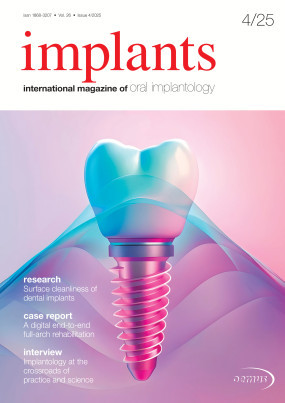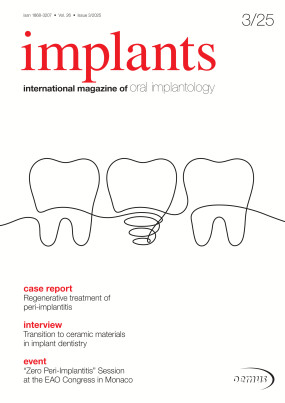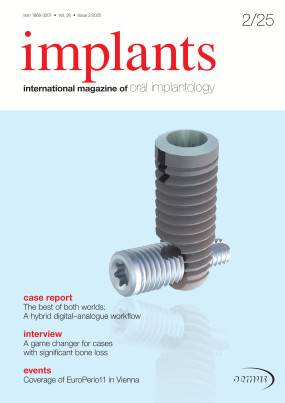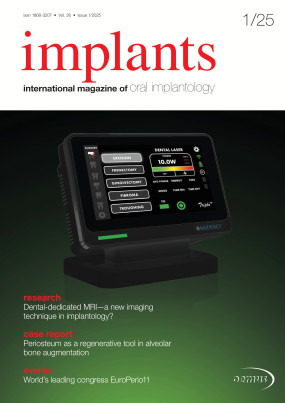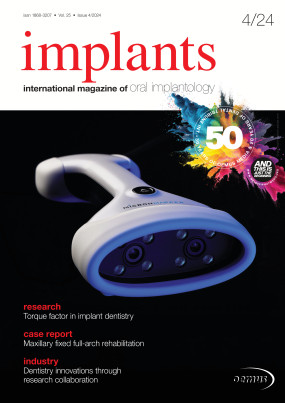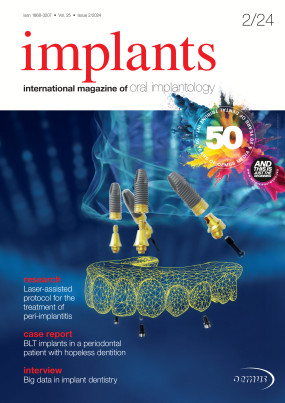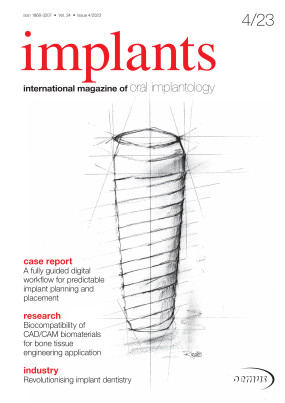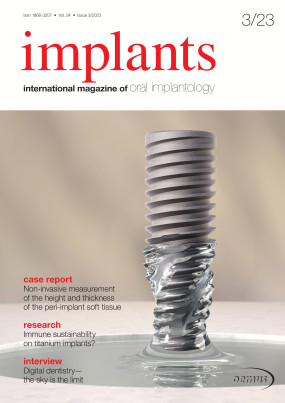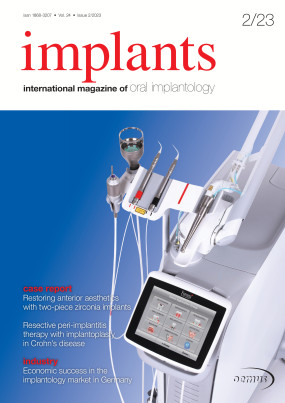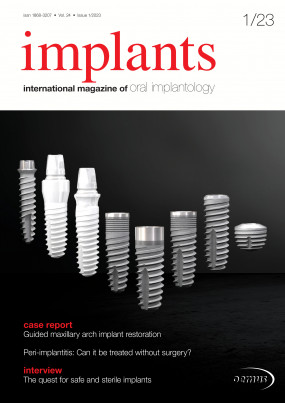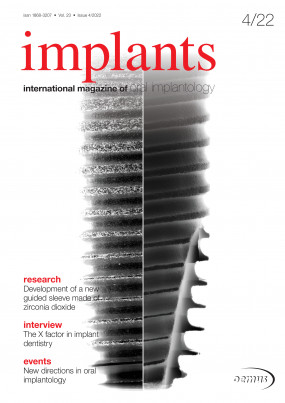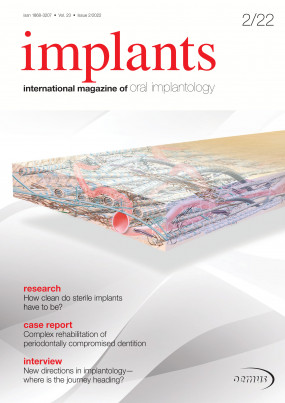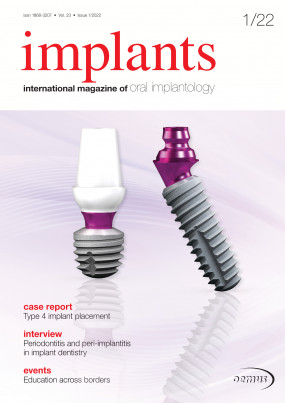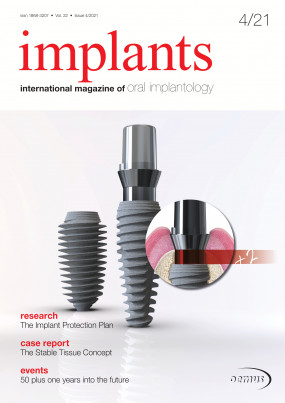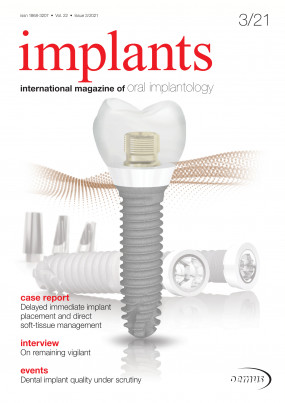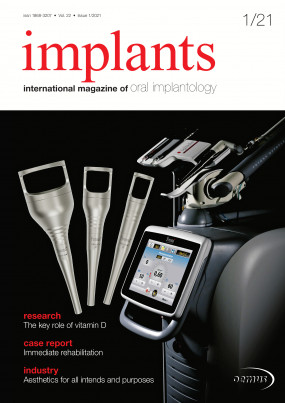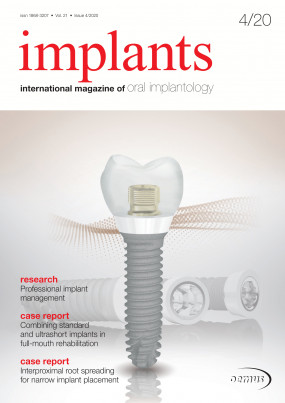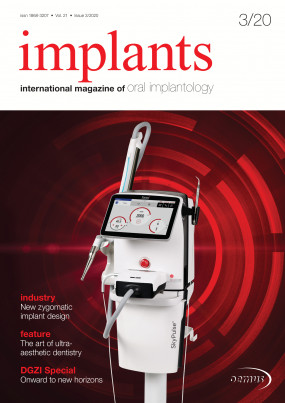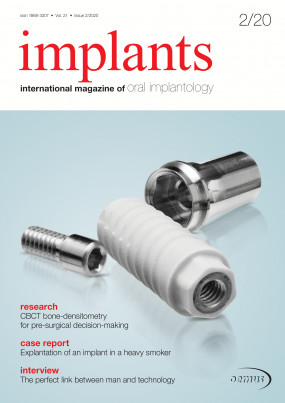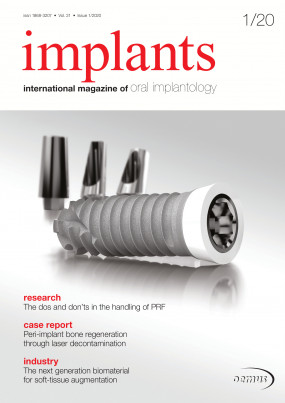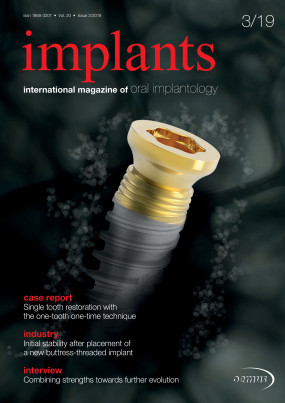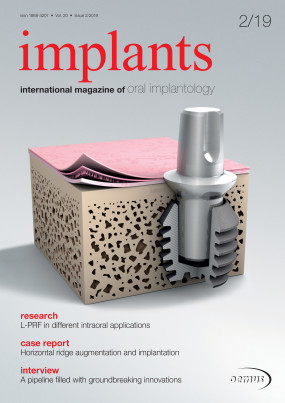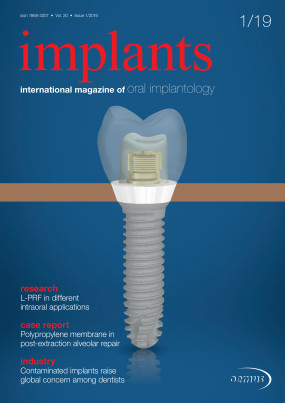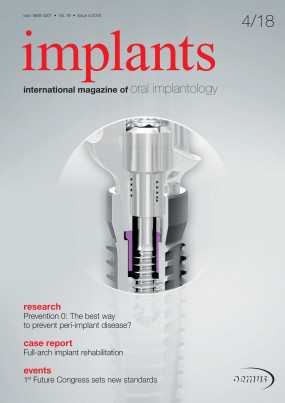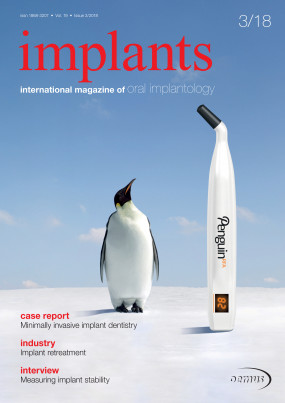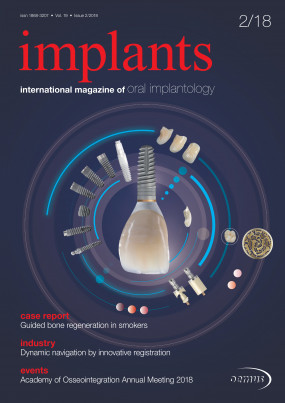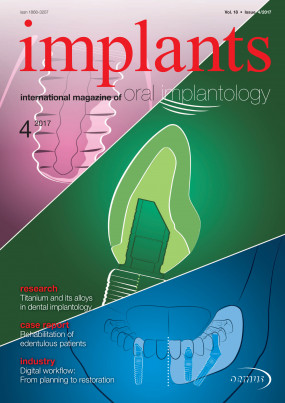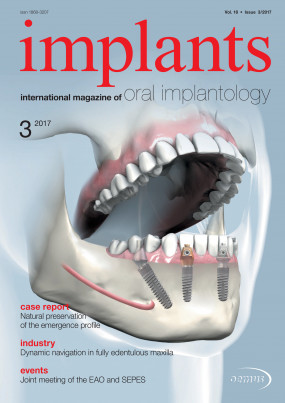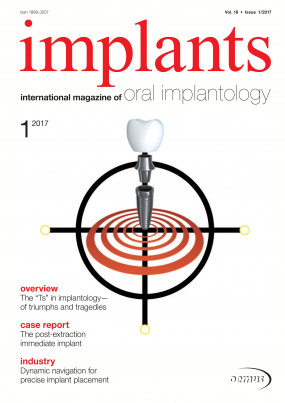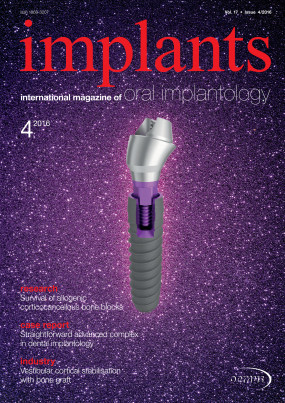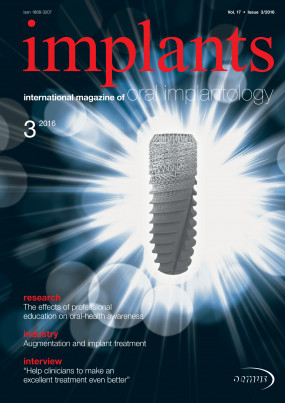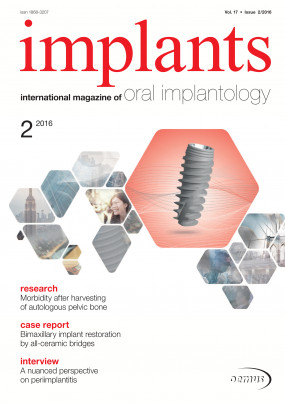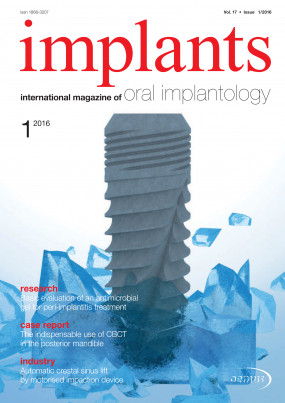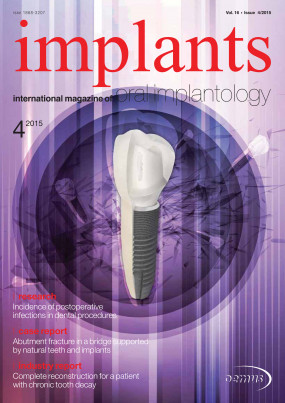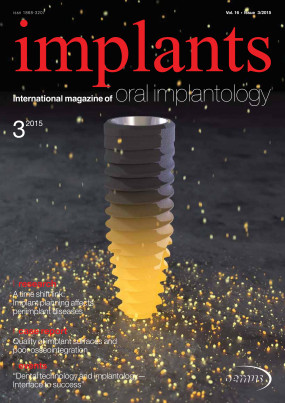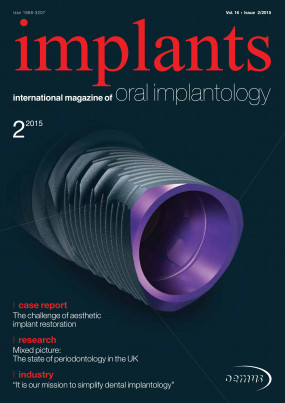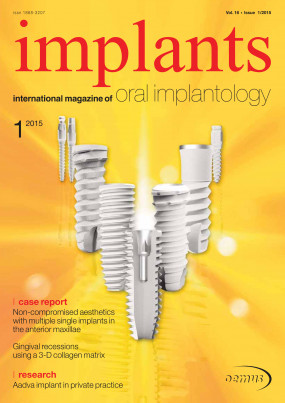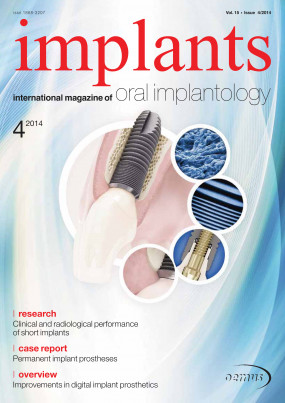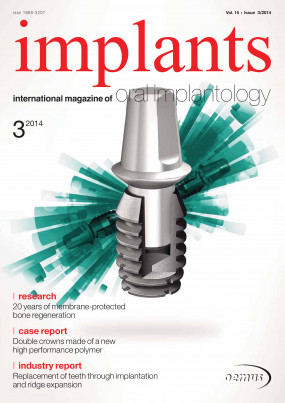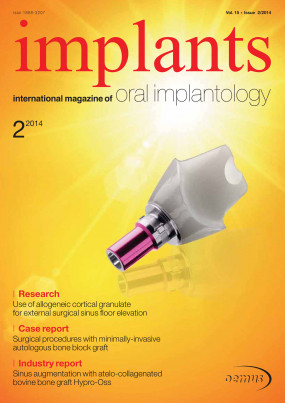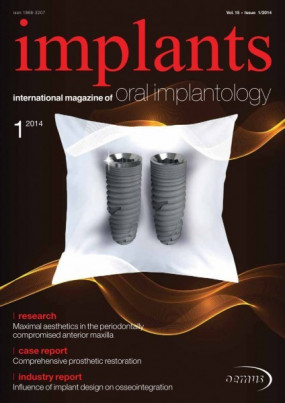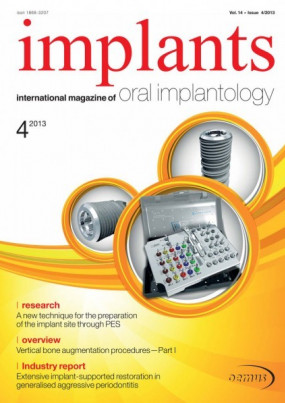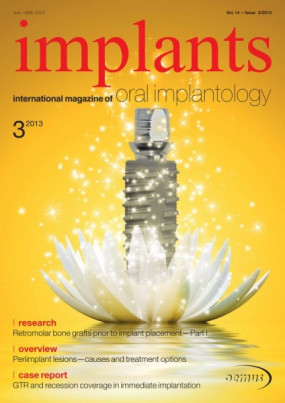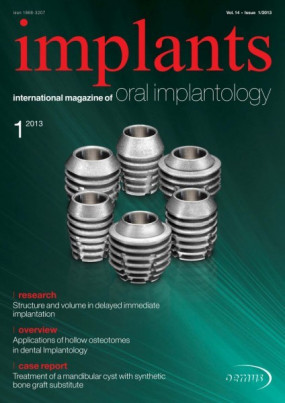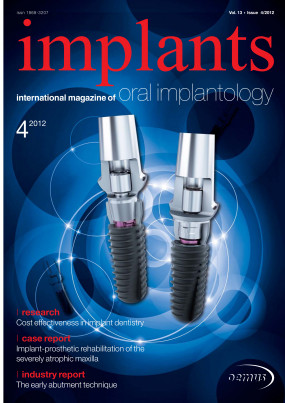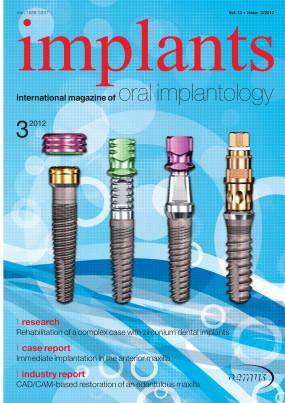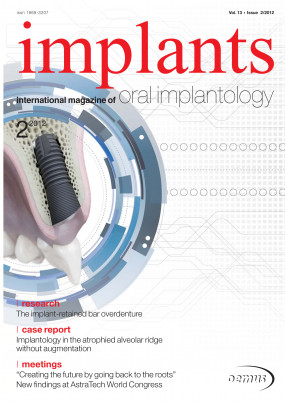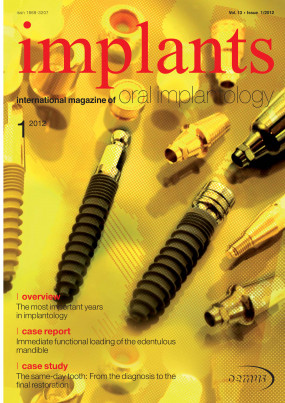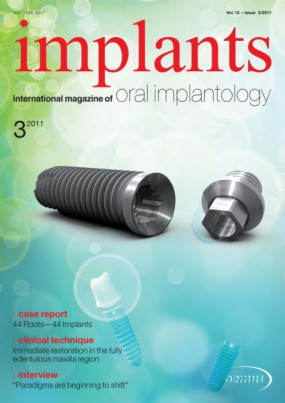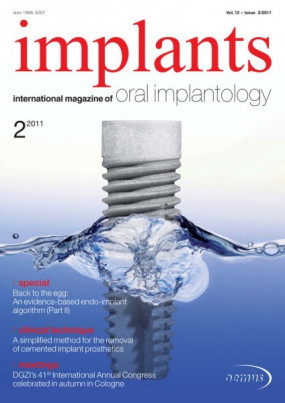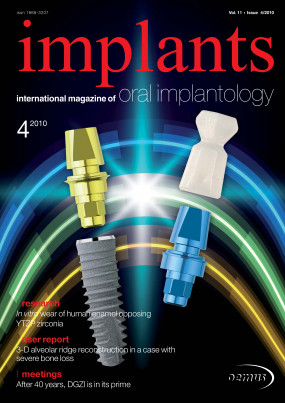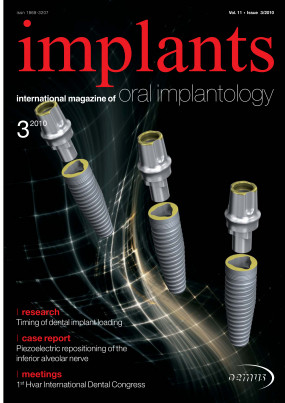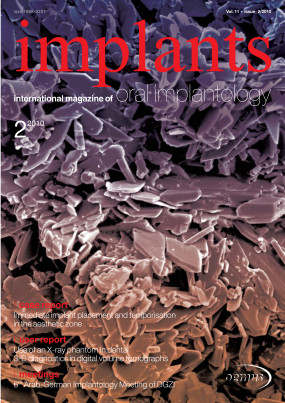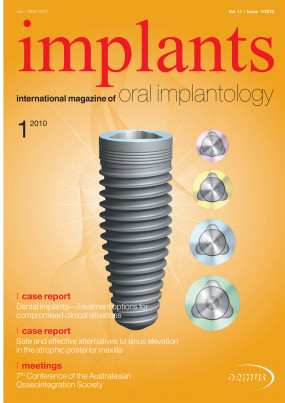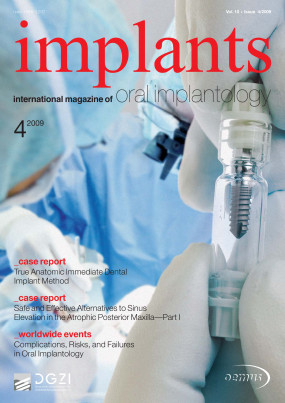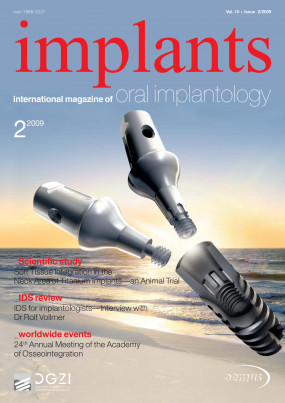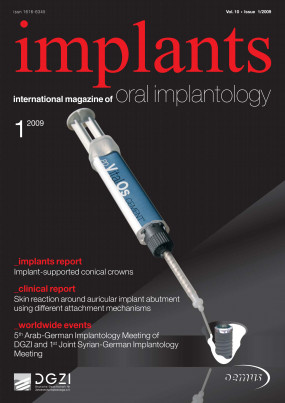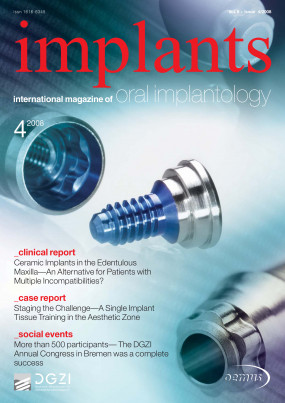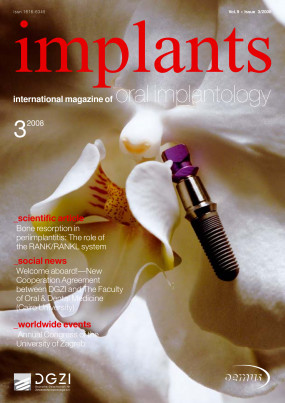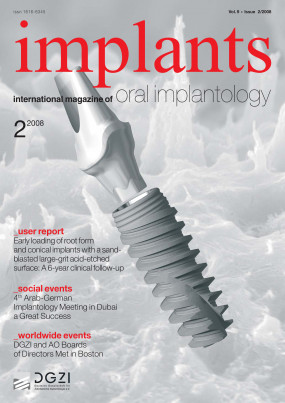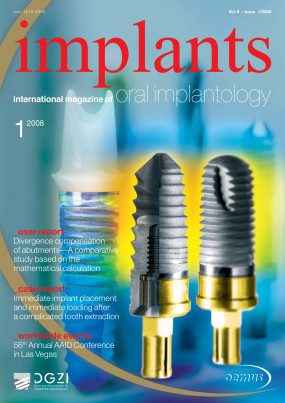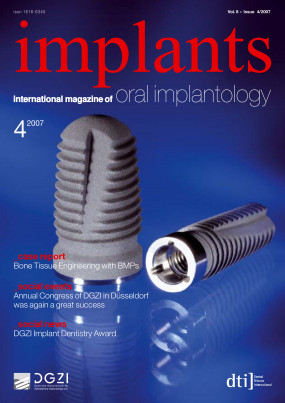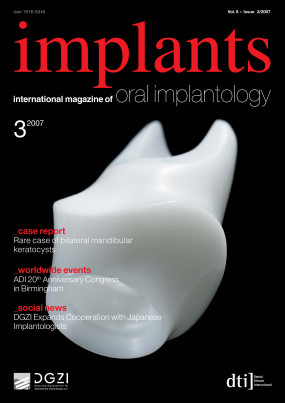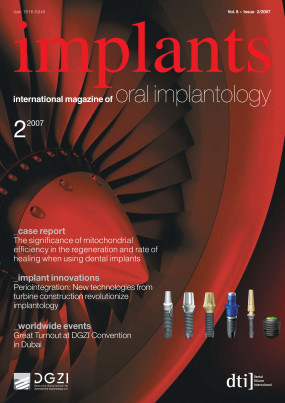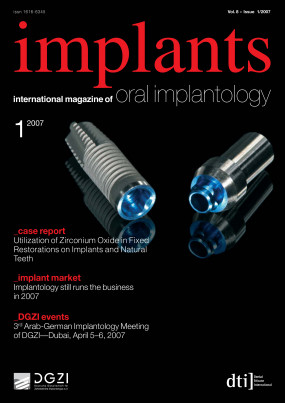Inhaltsverzeichnis
3
Implantology has always been a field where science meets craftsmanship, a dynamic balance between evidence and experience. As we close another year of innovation and reflection, this issue of implants captures that balance and looks ahead to the next chapter in our profession.
6
Surface cleanliness of dental implants: Current insights
Susanne Reichard, Dr Maurice Hatzky & Prof. Rüdiger Junker, Austria
Manufacturing-related contamination of dental implants represents a significant yet under-recognised risk factor for implant failure. This review critically examines the evidence on surface cleanliness, focusing on the analytical protocols and findings of the CleanImplant Foundation. Using scanning electron microscopy and energy-dispersive X-ray spectroscopy, multiple studies have revealed metallic, organic and polymeric residues on sterile implants. Although these impurities can induce foreign body reactions and compromise osseointegration, current standards remain largely consensus-based. This review identifies methodological gaps and proposes a framework for future evidence-based testing to establish reproducible cleanliness thresholds and strengthen patient safety in implantology.
10
Full-arch implants in periodontally compromised patients
Dr Eduard Aghasan, Dr Tigran Hakobyan, Prof. Curd Bollen & Prof. Gagik Hakobyan, Armenia
The study aimed to evaluate the long-term clinical and radiographic results of immediate dental implant placement and occlusal loading in periodontally compromised patients.
18
The present case report details the oral rehabilitation of a 62-year-old female patient presenting with chronic apical pathologies affecting the maxillary anterior teeth, which were deemed hopeless and indicated for extrac- tion. Given her concerns regarding aesthetics and function, the patient sought a fixed, predictable treatment option capable of replicating her natural dentition. She further emphasised the importance of avoiding an edentulous phase and requested an immediate restoration to maintain her facial appearance and overall quality of life.
24
Digital technologies have transformed implant dentistry by enhancing diagnosis, treatment planning and surgical simulation through 3D visualisation.1 Within this context, the ultimate goal of a definitive impression or scan is to accurately capture the 3D position of the implant in relation to adjacent hard and soft tissue as well as the opposing dentition.2 Conventional workflows, however, present limitations such as impression inaccuracies, polymerisation time, dimensional instability, laboratory or manufacturing errors, and patient discomfort.3 In response, the digital workflow has emerged as a reliable alternative.
32
Dentistry’s next frontier: International Osteology Symposium 2026
An Interview with Lisa Heitz-Mayfield and Anton Sculean
“Beyond Regeneration” is the motto of the next International Osteology Symposium in Vienna, 23–25 April 2026. It reflects the core focus on oral tissue regeneration while broadening the view to comprehensive patient care and long-term treatment success. Vienna promises a unique learning experience, with condensed, practice-oriented knowledge delivered by world-renowned experts alongside the rising stars of tomorrow.
34
In early October 2025, Hamburg hosted the 54th International Annual Congress of the German Association of Dental Implantology (DGZI). Since 2018, the DGZI has reinvented its congress format, creating an event that not only highlights the latest developments in implantology but also charts the course for the specialty’s future. Dr Georg Bach, the newly elected President of the DGZI, shares his reflections on this year’s congress.
36
Shaping the future of dentistry through technology
An interview with Dr Maria Grazia Di Gregorio-Schininà
High-resolution intra-oral scans, CAD/CAM-guided milling, and additive manufacturing are transforming modern dentistry, enabling workflows that are faster, more precise, and increasingly patient-centered.
38
39
The European Federation of Periodontology (EFP) warmly invites oral health professionals from across the globe to attend Perio Master Clinic 2026, taking place in the vibrant and culturally rich city of Baku, Azerbaijan on 6 and 7 March 2026. The 2026 edition will focus on the Perio-Restorative Interplay, underscoring the essential collaboration between periodontal and restorative disciplines in achieving outcomes that are not only predictable but also aesthetically refined and long-lasting—even in the most complex clinical situations.
40
Traditional implant workflows require multiple components—healing abutments, impression posts, scan bodies—all of which involve placing, removing, and replacing parts across multiple visits. This not only consumes time and may increase the risk of errors and biological complications. The Straumann® Fast Molar Solution eliminates extra steps by combining healing and scanning into a single component that remains in place from the day of surgery to the final restoration. Its streamlined procedures can save precious chair time and reduce the number of patient visits, increasing clinic efficiency and throughput.
41
Germany’s oldest implantology society’s strengthens its leadership
Dr. Georg Bach re-elected President of the DGZI
Freiburg-based oral surgeon Dr Georg Bach has been re-elected as President of the German Association of Dental Implantology (DGZI) during the general assembly held in Hamburg on 2 October. In his initial statement, Dr Bach expressed gratitude to his fellow board members for their dedication over the past years and voiced his enthusiasm for continuing their productive collaboration.
